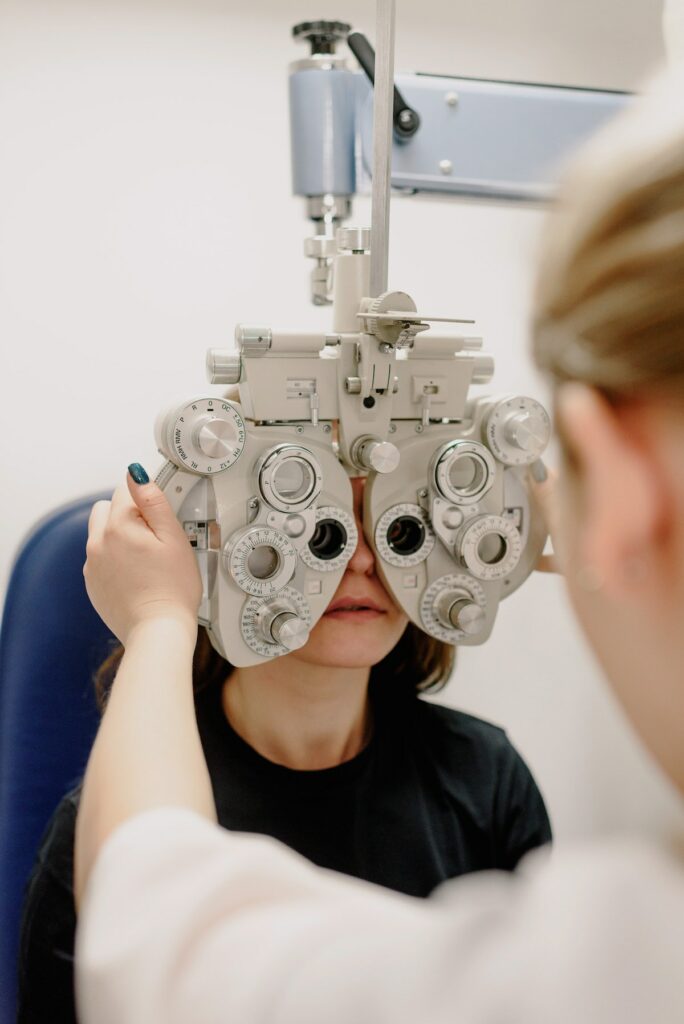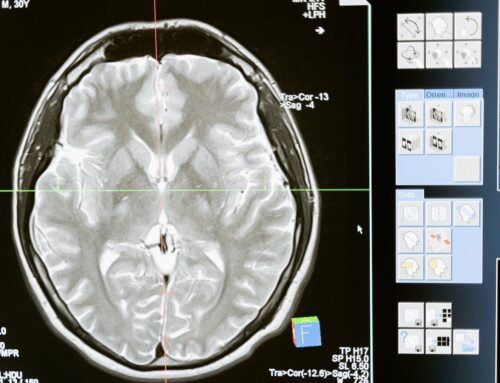
In this blog, I’ll talk about one of the ways in which you can obtain a catastrophic impairment designation, where as a direct result of your motor vehicle accident the impairment you sustained results in a loss of vision in both of your eyes.

A catastrophic impairment designation places you – an auto accident victim – in the highest level of impairment category available under automobile insurance regulations. While not a benefit itself, a catastrophic impairment designation is the gateway or vehicle to access enhanced benefits, where your policy limits increase to $1 million. All other impairments fell under the non-catastrophic and minor injury category.
If you want to learn more about the companion accident benefits claim, and kickstarting the accident benefits application process, then please click the “link” to read my blog entitled “How to Get Your Accident Benefits Application Started”.
The June 1, 2016 amendments to the Ontario Regulation 34/10: Statutory Accident Benefits Schedule (SABS 34/10), issued under the Insurance Act, R.S.O. 1990, c. I.8, introduced a stricter definition of catastrophic impairment. Section 3.1 was added to the SABS 34/10, which provides a tightening of the criteria for determination of catastrophic impairment.
One of the changes was the introduction into the SABS 34/10 of the use of the Snellen Chart, or an equivalent chart, such as the LogMAR Chart or Bailey-Lovie Chart, to measure visual acuity.
The stricter definition of catastrophic impairment as it relates to a loss of vision in both eyes can be found subsection 3.1(1)3 of the SABS 34/10, as amended by Ontario Regulation 251/15, reads as follows:
For the purposes of this Regulation, an impairment is a catastrophic impairment if an insured person sustains the impairment in an accident that occurs on or after June 1, 2016 and the impairment results in…:
- Loss of vision of both eyes that meets the following criteria:
- Even with the use of corrective lenses or medication,
- visual acuity in both eyes is 20/200 (6/60) or less as measured by the Snellen Chart or an equivalent chart, or
- the greatest diameter of the field of vision in both eyes is 20 degrees or less.
- Even with the use of corrective lenses or medication,
-
- The loss of vision is not attributable to non-organic causes.
Criteria for Catastrophic Determination
In order for you to gain a better appreciation of what is required to obtain a catastrophic impairment designation in accordance with subs. 3.1(1)3, you need to understand each of the criteria that must be satisfied, beginning with the criterion that the loss of vision must be attributable to non-organic causes.
Organic vs. Non-Organic Causes
The last criterion, under subs. 3.1(1)3.ii, states that “The loss of vision is not attributable to non-organic causes”, which begs an obvious question: what’s an organic cause? An organic cause refers to your physical symptoms that have a direct anatomical cause, and are linked to the changes in at least one or more of your body organs, which are detectable or observable by medically recognized diagnostic technology.
If for example, as a direct result of an MVA, you suffer severe damage to your optic nerve following significant trauma to your head/face, brain, and/or eye, then the damage to your ganglionic, or nerve cells, and the millions of nerve fibers that comprise your optic nerve, resulting in an anatomical change in its structure, can be detected and observed using medically recognized diagnostic technology. Furthermore, the visual impairment in your function can be subsequently measured by an ophthalmologist via visual tests.
A non-organic cause refers to your physical symptoms, which have a psychological basis, but don’t have a direct anatomical cause, and are somehow linked to the changes in at least one or more of your body organs, which are not detectable or observable by medically recognized diagnostic technology.
For example, chronic pain is a physical symptom with a non-organic or psychological component further to Waddell’s signs, as it exists in light of the lack of objective findings. In the case entitled Martin v. Nova Scotia (Worker’s Compensation Board), the SCC recognized chronic pain injuries despite a lack of objective findings, at paragraph 1, as follows:
There is no authoritative definition of chronic pain. It is, however, generally considered to be pain that persists beyond the normal healing time for the underlying injury or is disproportionate to such injury, and whose existence is not supported by objective findings at the site of the injury under current medical techniques. Despite this lack of objective findings, there is no doubt that chronic pain patients are suffering and in distress, and that the disability they experience is real. While there is at this time no clear explanation for chronic pain, recent work on the nervous system suggests that it may result from pathological changes in the nervous mechanisms that result in pain continuing and non-painful stimuli being perceived as painful. These changes, it is believed, may be precipitated by peripheral events, such as an accident, but may persist well beyond the normal recovery time for the precipitating event.
So, in the absence of objective findings, situations where non-painful stimuli are perceived as pain, is an example of a non-organic cause with a psychological component.
In a case entitled Decision No. 848/89, which was heard before the Worker’s Compensation Appeals Tribunal, a worker was claiming entitlement to an increase in his pension for the loss of vision in his eye to about a 20/200 visual acuity, as a result of being struck in his eye by a small spring at work. Further to the medical evidence that was presented to the panel, there was debate over whether the cause of the worker’s loss of vision had a strictly organic basis or whether there was a non-organic component to his vision loss. In regards to the potential non-organic component, the worker was assessed by a psychometrist and a psychiatrist, who completed a report which supported the following:
…strong evidence that this man suffers from what used to be called “hysterical” blindness and is now called “conversion disorder, 300.11” in DSM-III-R (the American Psychiatric Association’s Diagnostic and Statistical Manual, Edition III, revised). However, the history I got from him fails completely to corroborate the presence of relevant predisposing, precipitating, or maintaining factors. Either such factors do not exist in this case, or more likely, they are completely repressed and not available to his conscious appraisal or memory. The essential feature of conversion disorder is an alteration or a loss of physical functioning that suggests physical disorder but, instead, is an expression of psychological conflict or need … Now let us look at [the worker’s] case. Dr. Macrae has beautifully summarized the evidence for this being a non-organic condition: the variability of the worker’s visual acuity, the characteristic visual field and eye balance tests, the negative findings on electroretinographic and visual evoked response tests, etc. [The worker] tells me that when he plays soccer with his son, he has no trouble catching the ball, a feat that requires depth perception and thus bilateral vision. In addition, he states that after two to four hours of work he experiences burning in his right eye, increased drooping of the right eyelid and a bilateral, supraorbital headache all of which make it impossible for him to carry on.
In this case, Dr. Macrae argued that the worker’s alleged loss of vision, or reduced vision acuity, were rooted in a non-organic cause with a psychological component, because his symptoms weren’t detectable or observable by medically recognized diagnostic technology, such as electroretinographic and visual evoked response tests. Also, his symptoms were logically inconsistent with what he stated were the capabilities of his visual function, as for example, the ability to catch a ball requires a level of depth perception that he should be incapable of, given his claim of reduced visual acuity. In this case, despite the medical evidence in support of a non-organic cause to the worker’s loss of vision, the panel decided in the worker’s favour on the basis of giving him the benefit of the doubt.
Visual Acuity in Eyes
Ophthalmologists and optometrists typically use an eye chart known as a Snellen Chart, named after the Dutch ophthalmologist Herman Snellen, to measure your visual acuity, or clarity of vision. Some ophthalmologists and optometrists have begun using an improved eye chart known as a LogMAR Chart or Bailey-Lovie Chart to measure visual acuity.

A Snellen Chart is used by ophthalmologists and optometrists to check your visual acuity. It is composed of eleven lines of block letters traditionally known as optotypes. The first line at the top of the Snellen Chart has a very big single block letter (usually an “E”), and then in each subsequent line from the top to the bottom, the number of letters increases, but their size decreases.
When an ophthalmologist or optometrist is measuring your visual acuity, the Snellen chart would be positioned at a distance of 20 feet or 6 metres away from you. Each line corresponds with a different level of visual acuity, which ranges from the very best visual acuity at 20/05 or 6/1.5 to the very worst visual acuity at 20/200 or 6/60. The eighth line of the Snellen Chart, which is typically underlined by a red line and has eight block letters, corresponds with the normal visual acuity of a healthy human being, and is known as the 20/20, or 6/6, line. Therefore, if you can read the eight block letters on the eighth line, or the 20/20 or 6/6 line, then you have the normal visual acuity of a healthy human being, which means you won’t likely require prescription corrective glasses.
If you can read the eleventh line, or the 20/05 or 6/1.5 line, then your visual acuity would not only surpass that of a healthy person with normal visual acuity, but it would rival the visual acuity of an eagle. If you have 20/05 or 6/1.5 visual acuity, then this means that what a healthy person with normal visual acuity could only see at 5 feet or 1.5 metres away, you can see at 20 feet or 6 metres away. Conversely, if the only line you can read is the single, very large letter on the first line, or the 20/200 or 6/60 line, then what a healthy person with normal visual acuity could see at 200 feet or 60 metres away, which is the average distance that a person can see clearly, you can only see at 20 feet or 6 metres away.

Further to Healthwise Staff in Alberta, “In Canada, a person is legally blind if his or her best eye has less than 20/200 vision or less with the help of glasses or contact lenses. Having 20/200 vision means that a person cannot be more than 6 m (20 ft) away to see what a person with normal vision can see from 60 m (200 ft) away”. Therefore, if you have a visual acuity of 20/200 or 6/60, then you are legally blind.

Of note, further to the Ontario Regulation 340/94: Drivers’ Licences, under the Highway Traffic Act, if you are a driver in Ontario, then you must have a visual acuity of at least 20/50 or greater, in accordance with subs. 18.(1)(a), which reads as follows:
- (1) An applicant for or a holder of a Class M, M1 or M2 driver’s licence must have,
(a) a visual acuity as measured by Snellen Rating that is not poorer than 20/50, with both eyes open and examined together with or without the aid of corrective lenses.
So, in Ontario it’s illegal for you to drive with a visual acuity of less than 20/50.
The Diameter of the Field of Vision
Further to Healthwise Staff in Alberta, “Canada also considers a person legally blind if his or her visual field is 20 degrees or less, even with the help of glasses or contact lenses. Having a visual field of 20 degrees means that a person has trouble seeing to his or her side when looking straight (peripheral vision)”.

In order to measure your visual field and ascertain any dysfunction in your peripheral vision, an ophthalmologist or optometrist would examine your eye by conducting a visual field test, such as a confrontation visual field examination or Donders’ test, or one of the perimetry or campimetry test of the visual field, and determine what the degree of your horizontal visual field is along the horizontal meridian. If your visual field is between 120 to 140 degrees along the horizontal meridian without turning your head, then your field of vision is within the normal range of a healthy human being. If, however, the greatest diameter of your field of vision in both of your eyes is 20 degrees or less, then you are legally blind.

Of note, further to the Ontario Regulation 340/94, under the Highway Traffic Act, if you are a driver in Ontario, then you must have a horizontal visual field of at least 120 continuous degrees along the horizontal meridian, in accordance with subs. 18.(1)(b), which reads as follows:
- (1) An applicant for or a holder of a Class M, M1 or M2 driver’s licence must have,
(b) a horizontal visual field of at least 120 continuous degrees along the horizontal meridian and at least 15 continuous degrees above and below fixation, with both eyes open and examined together. O. Reg. 83/05, s. 10.
So, in Ontario it is illegal for you to drive if your horizontal visual field is less than 120 degrees along the horizontal meridian and at least 15 continuous degrees above and below fixation.
Conclusion
CNIB Foundation
The CNIB Foundation is a non-profit organization, which is “driven to change what it is to be blind today”, and offers various “innovative programs and powerful advocacy that empower people impacted by blindness to live their dreams and tear down barriers to inclusion”. Please visit their website for more information at the following URL address:
Vision Loss Rehabilitation Ontario/Canada
Vision Loss Rehabilitation Ontario/Canada is a “not-for-profit national healthcare organization and the leading provider of rehabilitation therapy and healthcare services for individuals with vision loss”. Their “rehabilitation services help Canadians with vision loss accomplish daily living activities safely and with confidence”. They have “certified specialists that “provide a range of services that help individuals with vision loss lead more independent, active lives”. Please visit their website for more information at the following URL address:
More Organizations for the Blind and Visually Impaired
The organizations listed below provide counseling for you if you are blind and visually impaired. They offer services, such as, but not limited to, the following: individual and family counselling relating to vision loss, parent, peer, and family support groups and referrals to other agencies. Some also provide additional information aids to support your independence with your visual acuity impairment.
Accessible Media Inc.
Accessible Media Inc. is a “not-for-profit media company that entertains, informs and empowers Canadians who are blind or partially sighted”. Please visit their website for more information at the following URL address:
Bell Canada – Accessibility Services Centre
Bell Canada – Accessibility Services Centre builds products, from screen readers to mobile devices, as well as offers services for blind and low vision users to enhance your mobile experience. Please visit their website for more information at the following URL address:
https://www.bell.ca/Accessibility_services/Vision_solutions
Canadian Council of the Blind
Canadian Council of the Blind offers programs that focus on improving the lives for those with vision loss and awareness issues to the sighted community, and focus on changing what it means to be blind. Please visit their website for more information at the following URL address:
https://ccbnational.net/shaggy/programs/
Canadian Guide Dogs for the Blind
Canadian Guide Dogs for the Blind is a national, charitable organization founded that provides “Canadians with greater mobility and independence through the use of professionally trained guide dogs (Nationally) and mobility assistance dogs (Ottawa area)”. Please visit their website for more information at the following URL address:
Deafblind Ontario Services
Deafblind Ontario Services provides an “array of services to people who are Deaf, hard of hearing, non-verbal and deafblind that are customized to each individual’s unique needs, method of communication, and goals to enrich their life”. Please visit their website for more information at the following URL address:
Eye Bank of Canada (The) – Ontario Division
The Eye Bank of Canada (Ontario Division) is the “largest eye bank in Canada”, and they “receive, process and distribute more than 4,000 donated eye tissues annually for sight-saving transplants, research and education”. They are “licensed by Health Canada, and are accredited with the Eye Bank Association of America (EBAA)”. Kensington Health is a “not-for-profit, community-based model of specialized healthcare services that creates consistently better health outcomes by tirelessly pursuing the best ways to respond to unmet health needs within the communities we serve”. Please visit their website for more information at the following URL address:
https://www.kensingtonhealth.org/eye-bank
Fighting Blindness Canada – Foundation Fighting Blindness
Foundation Fighting Blindness has the goal of driving the “research that would lead to preventions, treatments, and vision restoration for the spectrum of degenerative retinal diseases, specifically macular degeneration – including age related macular degeneration, retinitis pigmentosa, Usher syndrome, Stargardt disease and Leber congenital amaurosis (LCA)”. They are currently the “world’s leading private funder of retinal disease research”.
Fighting Blindness Canada is Canada’s “leading private funder of vision research”. They “offer hope to Canadians by identifying the best, most promising research that is driving treatments and cures for blinding eye diseases, and by raising and stewarding funds to support this essential, sight-saving research”. Please visit their website for more information at the following URL address:
https://www.fightingblindness.ca/
Lions Foundation of Canada – Dog Guides
Lions Foundation of Canada – Dog Guides seeks to “empower Canadians with disabilities to navigate their world with confidence and independence by providing Dog Guides at no cost to them and supporting each pair in their journey together”. Please visit their website for more information at the following URL address:
https://www.dogguides.com/index.html
National Services Dogs
National Service Dogs seeks to “empower people to achieve their full potential with strategically trained and certified service dogs, catalysts for restorative change”. Please visit their website for more information at the following URL address:
Ontario Ministry of Education – Resource Services and Outreach Programs
The Ontario Ministry of Education’s Resource Services and Outreach Programs has a Provincial Schools Resource Services Department that “provides a range of services to families and school boards in support of students who are blind, deafblind, low-vision, Deaf, hard of hearing or who have a severe learning disability”. Their programs include, but are not limited to, the following: “workshops, on-line learning opportunities and early intervention programs designed to facilitate the sharing of knowledge and ideas so that students across the province are able to achieve their full academic potential”. Please visit their website for more information at the following URL address:
https://pdsbnet.ca/en/programs-and-services/resource-services-and-outreach-programs/
Middlesex-London Health Unit – Healthy Start – Blind Low Vision Early Intervention Program
The Blind-Low Vision Early Intervention program is available for “families with children who have a visual impairment from birth until school entry”, and provides you support in your home and in your community. So, “if your child has been diagnosed with blindness or low vision, you can get support through the Blind-Low Vision program”, which offers family support, intervention services, and consultation services. Please visit their website for more information at the following URL address:
https://www.ontario.ca/page/blind-low-vision-early-intervention-program
St Joseph’s Health Care London – St Joseph’s Hospital – Ivey Eye Institute
The Ivey Eye Institute is the main referral centre for eye disease in Western Ontario and is located at St. Joseph’s Hospital in London, Ontario. Amongst other things, they “provide quality medical and surgical eye care” for their region. Please visit their website for more information at the following URL address:
https://www.sjhc.london.on.ca/areas-of-care/ivey-eye-institute
Please keep in mind that these aforementioned services may or may not be regulated in Ontario. You can contact the Consumer Protection Ontario to help you ask the right questions before you choose any of their services. If you have a concern or serious complaint about any non-regulated service, then please visit www.ontario.ca/page/consumer-protection-ontario/ for further information.
I hope you found this information valuable. Rudder Law Group’s website is your one-stop source for answers to all of your legal questions concerning catastrophic impairment law and personal injury law.





Leave A Comment